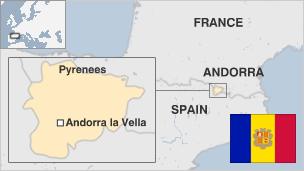Anne Boleyn was ambitious and smart, could probably have run England all by herself, and she knew it (But more about that later). Is it really a surprise that she was the first of the egomaniac Henry's wives to be executed? Anne was beautiful, refined, and skilled at political maneuvering. She played a major part in ushering in the English Reformation. If anyone can say that they were 'born in the wrong time', Anne Boleyn certainly could. Had she been born in an era where women could hold office and run a country, she would have been the Hilary Clinton of her age, except sexier. She's a sexy Hilary Clinton. Keep that image in your mind as you read the rest of this. ;)
 Anne was born sometime between 1501 and 1507 to Thomas and Elizabeth Boleyn. Thomas was a favored and talented diplomat, and because of that Anne received her formal education in the court of Margaret of Austria, and her not-so-formal education in the court of Queen Claude of France. She served as a maid of honor to both of those women, spending nearly eight years in Europe before returning to England.
Anne was born sometime between 1501 and 1507 to Thomas and Elizabeth Boleyn. Thomas was a favored and talented diplomat, and because of that Anne received her formal education in the court of Margaret of Austria, and her not-so-formal education in the court of Queen Claude of France. She served as a maid of honor to both of those women, spending nearly eight years in Europe before returning to England.
Following her stay on the continent, Anne went through two engagements, which were later broken off. She was sent to the English court to be a maid of honor to Queen Catherine, and this is where she met Henry.
From there the story plays out just as how you remember. Boy meets girl. Boy falls madly in love with girl. Boy is already married, and embarks on a seven year journey to divorce his wife. Boy divorces his wife and marries girl. Girl had a baby. Boy becomes disillusioned. Boy comes up with reasons to behead girl. It's all terribly romantic, no?
No, it's really not romantic at all. Even if it didn't end with Anne being beheaded, there's several reasons why her and Henry's relationship was cringe worthy:
 Anne was born sometime between 1501 and 1507 to Thomas and Elizabeth Boleyn. Thomas was a favored and talented diplomat, and because of that Anne received her formal education in the court of Margaret of Austria, and her not-so-formal education in the court of Queen Claude of France. She served as a maid of honor to both of those women, spending nearly eight years in Europe before returning to England.
Anne was born sometime between 1501 and 1507 to Thomas and Elizabeth Boleyn. Thomas was a favored and talented diplomat, and because of that Anne received her formal education in the court of Margaret of Austria, and her not-so-formal education in the court of Queen Claude of France. She served as a maid of honor to both of those women, spending nearly eight years in Europe before returning to England.Following her stay on the continent, Anne went through two engagements, which were later broken off. She was sent to the English court to be a maid of honor to Queen Catherine, and this is where she met Henry.
From there the story plays out just as how you remember. Boy meets girl. Boy falls madly in love with girl. Boy is already married, and embarks on a seven year journey to divorce his wife. Boy divorces his wife and marries girl. Girl had a baby. Boy becomes disillusioned. Boy comes up with reasons to behead girl. It's all terribly romantic, no?
No, it's really not romantic at all. Even if it didn't end with Anne being beheaded, there's several reasons why her and Henry's relationship was cringe worthy:
- Henry was somewhere between nine and fifteen years older than Anne.
- Henry had done the do with Anne's sister, Mary Carey nee Boleyn. Most historians agree that they even had a child together, Henry Carey, though King Henry never acknowledged his legitimacy.
- Both Anne and Henry's treatment of the respected Catherine of Aragon from the time they first became an item until Catherine's death was absolutely terrible. Catherine was slowly forced from her place of prominence, as Anne eclipsed her. Both Henry and Anne were cruel to Catherine, and Catherine was, once again, forced into poverty and cut off from her friends and family.
- Anne used her position at court to secure political positions for her family and friends, to the point where the Boleyns were practically running the country. The Boleyns were not particularly magnanimous about this turn of events.
Between her treatment of Catherine, quick temper, and open support for Evangelical ideas, Anne made a lot of enemies. And when Henry started to get irritated with Anne, those enemies pounced on the opportunity to discredit and replace her. Enter Jane Seymour, homewrecker. The Boleyn faction was slowly replaced by the Seymour faction, and Anne was put on trial and beheaded.
Anne's real legacy survives in not only the reign of her daughter, the famous Glorianna, but in the formation of the Anglican church. There's a big chance that Henry would have stayed a devout Catholic had he never met Anne Boleyn. Anne placed pressure on Henry to marry her, and, it is said, placed pamphlets in his hands that promoted reformation ideals. She and her family schemed and maneuvered until she was queen, and unintentionally brought in a reformation that would change England forever.
Sources
A Tudor Treasury by Elizabeth Norton
A Tudor Treasury by Elizabeth Norton
Henry VIII by Kathy Elgin
The Six Wives of Henry VIII by Alison Weir
The Six Wives of Henry VIII by Antonia Fraser
Six Wives: The Queens of Henry VIII by David Starkey
The Other Tudors by Philippa Jones
The Other Tudors by Philippa Jones
























